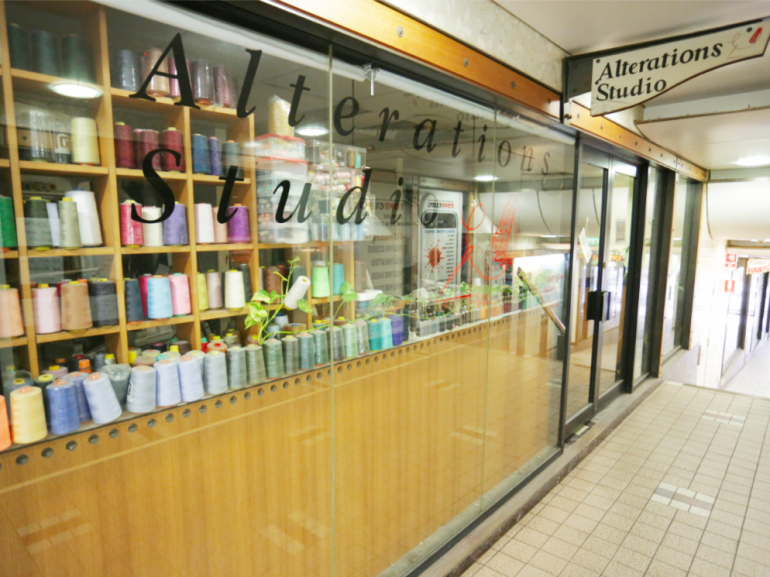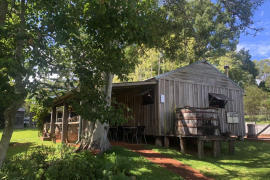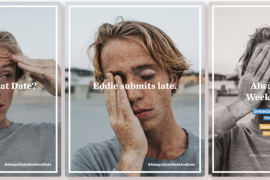The ideas featured in this inaugural everyday innovation selection have been enacted in the tutorial space. Tutors are an influential part of students’ experiences at university as they create vital learning environments for course content, academic and professional skills, and personal development. The connections and care possible in the tutorial space can be uniquely powerful in helping students develop a sense of belonging, a key element of success and satisfaction at university. The scope for what tutors have time, or remit, to do in tutorials can be limited, and so it’s especially important to recognise everyday innovation in this space; the clever and caring ways in which tutors enact their ideas to benefit their students.
Jacob Elmasry: Encouraging mistake-mediated learning
Jacob Elmasry has taught casually for the School of Civil Engineering since 2019, tutoring more than 10 different subjects. In 2021 he received a Highly Commended Prize in the Annual Dean’s Award for Outstanding Tutoring. Jacob’s passion for teaching has resulted in him undertaking a PhD in Engineering Education, researching the best ways we can teach and interact with our students.
“I made a small change to how I marked in-class submission questions in order to support my students to engage in low-stakes, mistake-mediated learning. These questions were a component of the assessment for the unit. They were based on content from the previous week, and students created and submitted their responses in tutorials. The questions were worth one mark each, and together added up to 10% of each student’s total mark. As the questions were submitted across the semester it didn’t sit well with me that, while fundamentally still learning, students could be penalised by losing marks for making mistakes. This approach didn’t encourage them to make mistakes and to learn from them. The most important goal for the course was to learn over time, and mistakes are part of that process.
While I didn’t have the power to change the assessment design, I could change my approach to marking it. I decided to implement an approach of ‘assessment as learning’. If students did not receive a mark for their response to a question, I left feedback and gave them a chance to review the question. Then, if they could come and have a chat with me in or after class and explain where they went wrong in their response, they could get their mark. From these conversations I could see that this simple innovation resulted in students improving their understanding of concepts and, as a result, their marks.”
James Findlay: Inviting engagement through social annotation
Dr James Findlay is an Associate Lecturer in the discipline of history at The University of Sydney. He teaches Australian history, with a research focus on historical film and television studies, convict history, Australian popular culture, and public history.
“I wanted to support my History students to engage more deeply with assigned readings by encouraging student-led learning. To do this, I implemented a weekly online social annotation activity using a platform called Perusall which allowed me to upload PDFs for students to annotate directly and collectively. Annotations are wonderful, particularly in history, because they allow students to reflect on the histories being presented to them while they’re reading them. Reflections can involve expanding upon or addressing a point raised in a text, asking questions about an argument, method, or piece of evidence, or disagreeing with the ideas presented. Responses can include adding to sections already annotated by other students, often resulting in a chain of annotations forming a conversation on points of interest between students that we could later unpack in class.
Through this group engagement with written histories online and the reflections and analysis that this provokes, students take ownership of their own learning before class even happens by critically engaging with texts in an online group setting. As a bonus, I’ve found that students who may be nervous speaking in person tend to thrive in this online environment. The annotations left on readings and the conversations they generate have also become invaluable for my lesson planning, arming me with a sense of the intellectual terrain before commencing in-class discussions and activities. This has been a very satisfying innovation to implement and feedback on the USS affirmed that students appreciated the approach, enjoyed it, and found it valuable for their learning.”
Karen-Anne Wong: Supporting connections and belonging
Dr Karen-Anne Wong is a practice-led researcher currently investigating representations of the posthuman through children’s literature. Karen has been a research affiliate and sessional academic at the University of Sydney since 2013, and in 2014 received the Dean’s Citation for Excellence in Tutorials. Her research interests also include diversity, disability, pedagogy and interdisciplinary methodologies.
“When redeveloping a postgraduate unit of study I used the Universal Design for Learning (UDL) framework to think about how to best design the unit to support my students’ learning. The approach endorsed learning about who my students are, and I used the Knowing Your Students (KYS) report to do so. The KYS data showed that my cohort was made up of almost 90% international students, many of whom were studying on campus for the first time. This gave me the idea to ask the students if they would like to form groups with students with whom they shared a language that they could use as study groups. The response was overwhelmingly ‘yes’! Students added themselves to these groups and I noticed that groups developed strong friendship bonds throughout the semester. They often shared translations of the readings, supporting each other through friendships that extended through to the peer review aspects of their assessments. I made sure that students who weren’t comfortable speaking in English were paired with a peer who spoke their home language. These peer review relationships became like an ongoing buddy system as students developed their final projects.
I also adapted the participation component of the unit to include optional online discussions for those who didn’t feel comfortable contributing verbally, and created detailed guidance on how they could contribute in person and online including grade descriptors. The discussion boards became active spaces for many students who weren’t the most outspoken in class and provided lovely reflections on the students’ experiences in the course. I received positive feedback from the students that they’d found these innovations meaningful and encouraging, and that having a support network of friends gave them a sense of belonging.”
About everyday innovation
Everyday innovation is about small, clever, creative and caring things that teachers at Sydney are doing in their classes. The scale of focus of this series is the quotidian, the extraordinary ordinary, the things we can do at arm’s reach, are comfortably within our resources, and are experimental – the stuff we try out together with our students in the lively spaces of our classes. Small ideas, while often overlooked on the big stage of awards and such, are special because they’re sensitive to their specific contexts. They’re often the simplest to implement and can allow nimble adaptations on the fly. These ideas deserve recognition and celebration! Let us know about your, or a colleague’s, everyday innovation by emailing us at [email protected].
Read other articles in the everyday innovation series for inspiration in your own teaching.






1 Comment